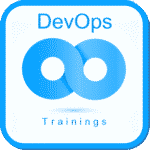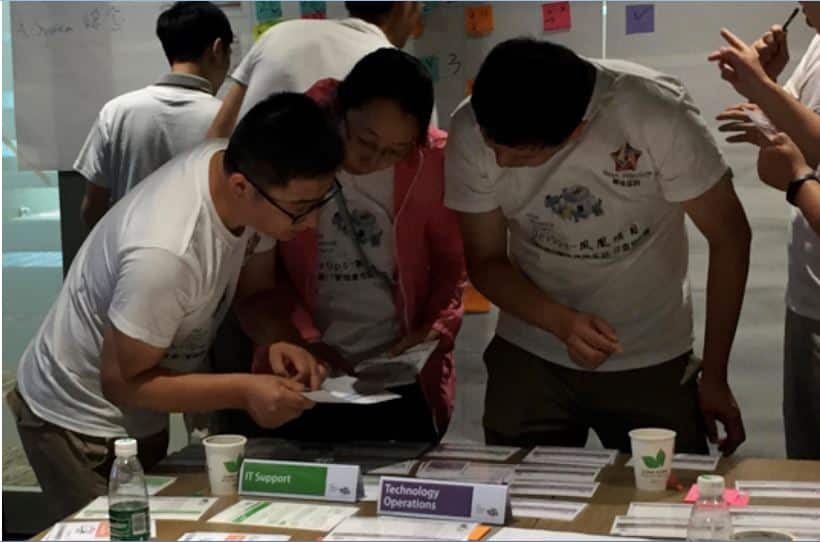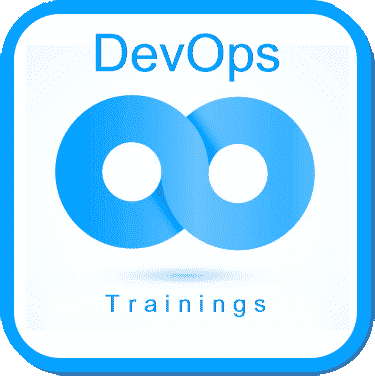
After writing 30 articles about DevOps Best Practices, I would like to present some articles on how to start using DevOps. I have seen many different approaches that have been used but all commence with an awareness session for the employees. The success of this awareness session is very important for the success of the complete journey that has to be taken. This article is about a practical solution to build the awareness session around a simulation named: “The Phoenix Project simulation”. This article briefly describes this simulation and relates it to the DevOps process as published in article 2 of the DevOps article series.
Lean principles are derived from the Japanese manufacturing industry. The term was first coined by John Krafcik in his 1988 article, ”Triumph of the Lean Production System”. For many, lean is the set of “tool” that assist in the identification and steady elimination of waste. As waste is eliminated quality improves while production time and cost are reduced.
A non-exhaustive list of such tools would include: SMED, value stream mapping, 5S, Kanban (pull systems), poka-yoke (error-proofing), total productive maintenance, elimination of time batching, mixed model processing, rank order clustering, single point scheduling, redesigning working cells, multi-process handling and control charts (for checking mura). [WIKI]
Within DevOps, often the Lean principles are used. One of the most appealing is flow. A DevOps team should deliver products by working in a particular cadence with no waiting times and no repairs. Therefore, a maximum time to market is realized with the least cost and the desired quality.
Gene Kim defines the three ways as an approach to adopt the DevOps ways of working. It consists of three stages that needs to be performed one after the other. The three stages are:
For more information see: https://itrevolution.com/the-three-ways-principles-underpinning-devops/
The Phoenix Project simulation is created by the company GamingWorks.nl and is based upon the novel “The Phoenix Project” that is written by Gene Kim, Keven Behr and George Spafford. In this book, the three ways of Gene Kim are explained by telling the story of the company Parts Unlimited that undertook the DevOps journey. All scenes in this book are very realistic and can be found in many organisations.
The simulation can be used for:
The Phoenix Project simulation is carried out by a group of people within the range of 8 to 11 persons. In one day, the participants will perform four rounds of the simulation. Each round takes approximately 30 minutes. The remainder of the time is spent on improving the way of working. In fact, during the simulation the lessons learned are about applying the three ways of Gene Kim.

The simulation starts with the introduction of the Steve the CIO / CTO of Parts Unlimited in which he declares that the stock prices of our company goes down, negative publicity in the magazines appear one after the other and the company is experienced as unreliable.
In four simulation rounds this negative trend must reverted into a positive trend.
This must be accomplished by improving the teams of The Phoenix project of Parts Unlimited.
Each team member will get one or more roles from the book “The Phoenix Project” assigned. For each role, a description is available. Based on these roles several teams are defined (see some name boards in figure 1).
In the four rounds cards are used to indicate the work that has to be done. Most important is that the work can only be improved if people work together. The success of the teams is measured per round. At the end of the day the results are visualised and the lessons learned are repeated. Figure 1 and 2 gives examples of people performing the simulation.


In figure 1, the DevOps process is depicted as explained in Article #02 of the DevOps series. The Dev team is shown in dark blue and the Ops team is depicted light blue. Both teams need to work together to service the customer.

The relationship of the DevOps process with The Phoenix Project simulation is as follows.
One of the most important things of The Phoenix Project simulation is about planning. In figure 2 the shape of a Kanban board is recognizable. The work for The Phoenix Project has to be planned. The Kanban board is explained to help the people carry out the simulation. Four types are work are recognized by Gene Kim: business projects, ICT projects, changes and unplanned work. The simulation is about all four kinds of work. The three ways are tightly related to the plan stage of the DevOps process.
The simulation is not about performing technical aspects like programming. This makes the simulation suitable for all roles in the DevOps team. To learn the effect of sound collaboration and affinity are more important. Both DevOps effects are incorporated in the simulation.
Since no programming is done, no compilation is needed as well. Though the software that is delivered must comply to the right configuration of the infrastructure and middleware. This is a part of the simulation.
Testing is next to the planning one of the major aspects of The Phoenix Project simulation. Without testing (feedback) the performance of the DevOps team will not increase. Even applying test driven development is possible.
The simulation consists of the role of the change manager who releases a change by approving on it. The simulation leader however is the arbiter and can override the decision of the change manager in case of errors.
Since no systems are build the deployment is not performed as well. However, configuration management is part of the simulation. This means that important checks have to be performed during the four rounds to keep track on the configuration.
The operation is part of the simulation. During the four rounds incidents occur which influence the productivity of the team.
The monitoring is part of the simulation, since the performance of the team is monitored by the role of the CFO and the simulation leader. The CFO must take note of the profit and loss that is accomplished by performing the simulation. Also, the stock price must increase by performing the simulation.
This simulation should be used as soon as the organisation is about to reorganize. The participants will derive pleasure in performing the simulation and learn how to work together. This energy is an important success factor of the transformation phase.
Or do you want to simulate a DevOps Project in your company or department?
Fill the form below and we will contact you and tell you everything you want to know.
You will also receive the ITpedia top articles weekly. You can unsubscribe at any time from that list.
Discuss with us about this article on LinkedIn.
DevOps Best Practices, ISBN: 9789492618078
Agile Service Management with Scrum, ISBN: 9789071501807


Mogelijk is dit een vertaling van Google Translate en kan fouten bevatten. Klik hier om mee te helpen met het verbeteren van vertalingen.